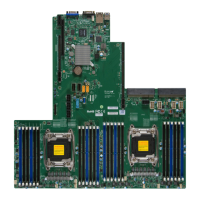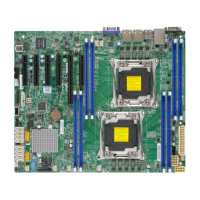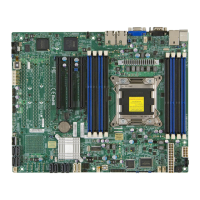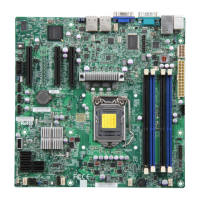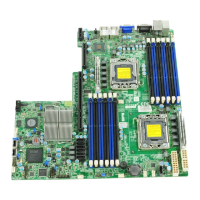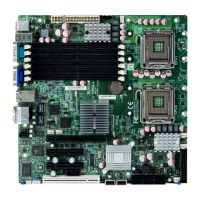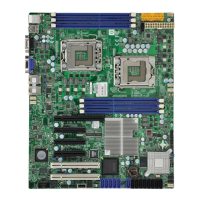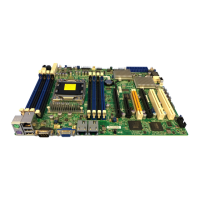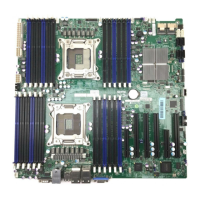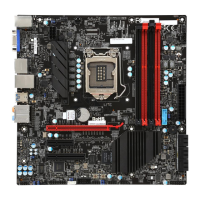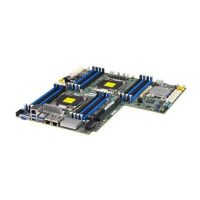
Do you have a question about the Supermicro SUPERO X10DRW-i and is the answer not in the manual?
| Form Factor | ATX |
|---|---|
| CPU Socket | LGA 2011-3 |
| Chipset | Intel C612 |
| Memory Type | DDR4 |
| Memory Slots | 8 |
| Maximum Memory | 512 GB |
| SAS Ports | 8 |
| M.2 Slots | 1 |
| Ethernet | Dual Gigabit Ethernet |
| RAID Support | 0, 1, 5, 10 |
| BIOS | AMI UEFI |
| SATA Ports | 10 |
| USB Ports | 6 |
Provides an overview of the motherboard's features, target audience, and specifications.
Details the structure and content of the user manual chapters and appendices.
Explains symbols and conventions used throughout the manual for clarity.
Provides contact information for Supermicro headquarters, Europe, and Asia-Pacific.
Introduces the motherboard and lists items included in the retail box.
Details the motherboard's support for Intel E5-2600V3 processors and PCH C612 chipset.
Highlights unique functionalities and features of the motherboard.
Explains system health monitoring capabilities like voltage and temperature.
Describes the Advanced Configuration and Power Interface specification.
Covers power supply requirements and recommendations for the motherboard.
Details advanced power management features like Intel Node Manager.
Introduces the AOM-S3108-H8 SAS controller mezzanine card.
Provides industry-standard warnings to prevent potential bodily injury during installation.
Discusses precautions for handling ESD-sensitive components to prevent damage.
Guides on the proper installation of CPUs and their heatsinks.
Provides instructions for installing and removing DIMM memory modules.
Details memory compatibility, speed, and population configurations.
Explains the process of mounting the motherboard into a chassis.
Provides instructions for installing a mezzanine card into the AOM slot.
Identifies and describes various motherboard connectors and I/O ports.
Details the connection of power cables to the motherboard.
Explains fan headers for cooling and the chassis intrusion header.
Describes the internal speaker for beep codes and the TPM/Port 80 header.
Details the Power SMB (I2C) and IPMB headers for system management.
Explains Serial Link General Purpose I/O headers and the standby power header.
Details the COM port for serial communication support.
Provides information on various jumper settings for motherboard configuration.
Explains the function and status of onboard LEDs for LAN and system power.
Details the motherboard's SATA 3.0 ports and their connections.
Provides systematic steps to diagnose and resolve common system issues.
Outlines steps to take before contacting technical support for assistance.
Guides on how to safely remove and install the CMOS battery.
Answers common questions regarding memory support and BIOS updates.
Introduces the AMI BIOS setup utility and its navigation.
Explains how to start and navigate the BIOS setup utility interface.
Covers a wide range of BIOS settings including boot, power, CPU, and system configurations.
Details settings for SATA and sSATA controllers and ports.
Covers configuration settings for PCIe, PCI, and Plug and Play devices.
Details serial port configurations and console redirection features.
Covers Trusted Computing (TPM) and ACPI settings for system security and power.
Explains how to configure and manage SMBIOS event logs.
Details Intelligent Platform Management Interface settings and event logs.
Covers BIOS password settings for system security.
Details boot configuration, mode selection, and boot order priorities.
Describes options for saving BIOS changes and exiting the setup utility.
Lists BIOS beep codes and their corresponding error messages.
Guides on downloading and installing system drivers and utilities.
Details the configuration and usage of the SuperDoctor 5 monitoring program.
Provides an overview of the Unified Extensible Firmware Interface (UEFI) BIOS.
Explains the process of recovering the main BIOS image from a corrupted state.
Guides on recovering the BIOS using a USB-attached device.
